Astilba in landscape design: where to plant and with what colors to combine?
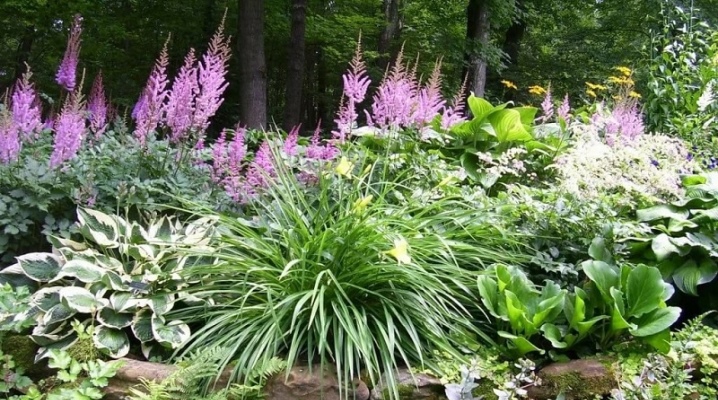
In order to choose the right plants for landscape design, you will have to study a lot of information about the corresponding flowers and shrubs. Then it will be possible to get a beautiful landscaping of the site in the spring and summer. Often in landscape design, a plant called astilba is used, which has small flowers and lush spreading branches. Many have seen it, but not everyone knows its name.
Using this plant, you can create a unique landscape design in your garden even on your own. Next, we will take a closer look at where it is best to plant astilbe, with what colors it should be combined, and also learn how to properly care for it.
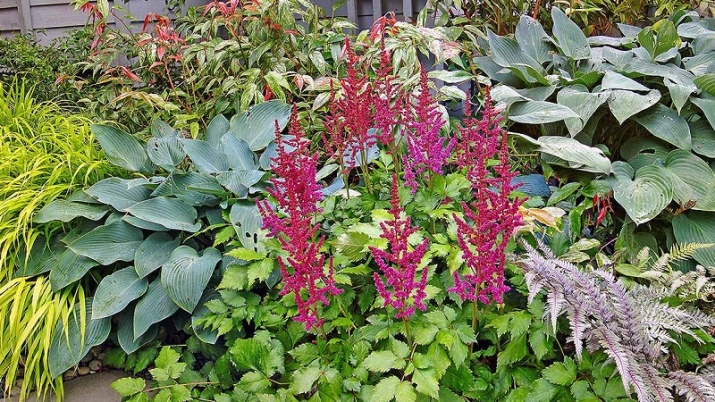



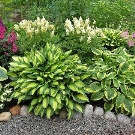

Description and varieties
Astilba is a very picturesque and vibrant plant with many inflorescences that can decorate any garden, lawn, flower garden and even a pond. It is known that in nature, this perennial plant grows in many Asian countries, including Japan and China... Astilbe is also found in Mongolia. Astilba is also known as false spirea. In total, about thirty species of this plant are known with different leaves and inflorescences, as well as flowering periods.
For many years, Astilba has been actively used by gardeners and flower growers in the creation of unique landscape design, as a result of such popularity, breeders have bred many new varieties with an unusual color of inflorescences.
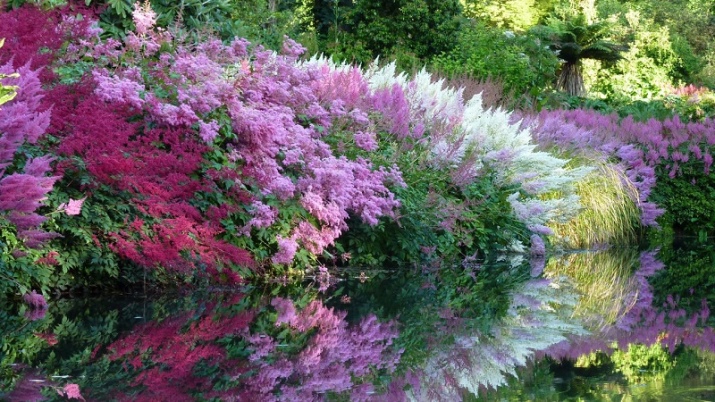
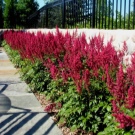
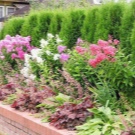
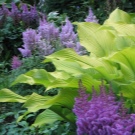
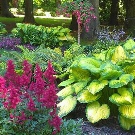
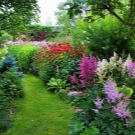
The plant is divided into special different groups, taking into account some criteria.
- Height. Astilba is dwarf, short, medium in height and tall. It is difficult to say which shrubs are most in demand, because, depending on preferences, several varieties of a given plant can be selected at the same time.
- Leaves color. The color can range from light green to dark green and even deep burgundy. The leaves themselves can be matte, glossy, shiny and even with a slightly pronounced fluff. The veins of openwork leaves are usually contrasting in relation to the main color. Even when the plant is not blooming, it is a real decoration of any garden.
- The color and size of the inflorescences. It can also be varied. The average size of the inflorescences is about 25-30 cm, the shape can be very original, for example, pyramidal. The color range is very wide, this plant can have cream, white, yellow, pink, crimson, purple and scarlet inflorescences. With such a wide selection, it is not difficult to give preference to one or another shade that is best suited for creating the perfect landscape design in the garden.
- Bloom. Astilba usually blooms in mid-summer. At least most of the varieties, but experts also know hybrids that can delight with their flowering already in the spring and even at the end of summer. That is, we can conclude that with the help of this plant, you can easily create regularly flowering flower beds that will delight the eye for a long time.
- Today gardeners know sun-loving varieties of this plant and shade-loving ones. However, most of them still prefer shady areas, in which plants bloom most actively and do not wither as quickly as under the rays of the scorching sun.
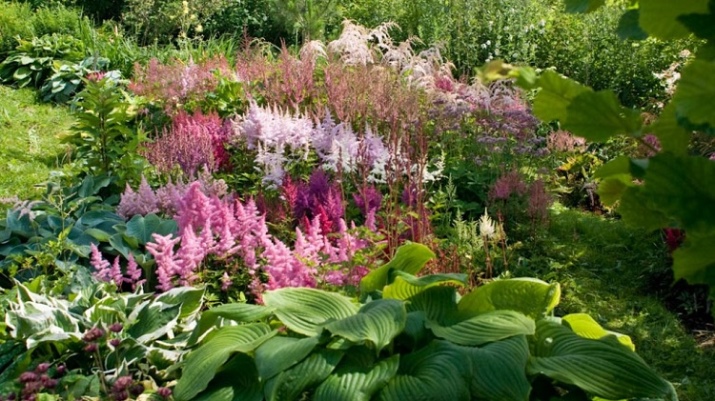
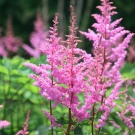
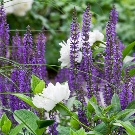
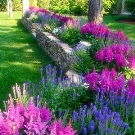
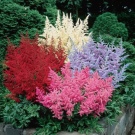
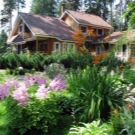
The nuances of growing and care
Astilba is considered an unpretentious plant, after planting in one place, it can grow up to five years, without the need for transplanting and dividing the shrub. On average, astilbe lives up to 10 years with proper care throughout its life. The plant can be propagated by cuttings, dividing the bush and often using seeds. The last option is the most painstaking and not always successful. Caring for this plant is very simple if the astilba is planted in a shaded place. The main thing is to water the plant in time, and during flowering to remove faded peduncles.
For astilba, it is best to choose loose soil, too dense soil is undesirable. To maintain moisture under the bush, experts recommend mulching; there is no need to weed astilba.
Fertilization should only be done when necessary, usually feeding is done in the spring and at the end of flowering.
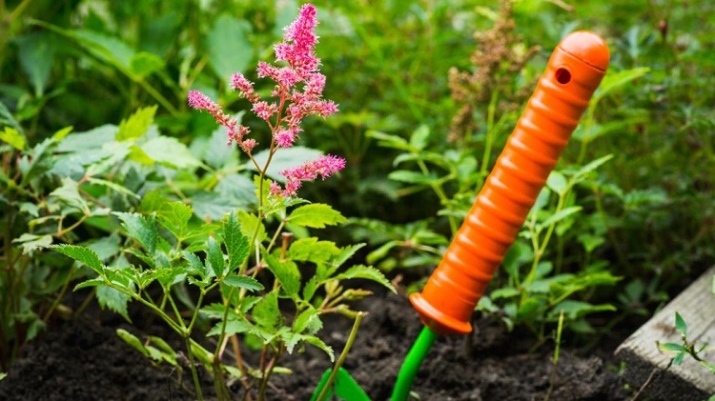


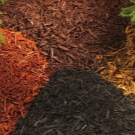
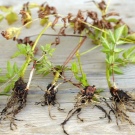
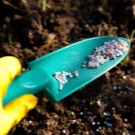
Application in landscape design
Astilba will be advantageous for any landing method. It is in harmony with almost all flowers and even conifers.
- When choosing different varieties of astilbe with different heights, it is best to plant them in tiers, creating original multi-tiered flower beds. With such a planting, it is better to plant several plants in groups, so they will look the most advantageous;
- Often, astilba with other plants is planted directly on a flower bed in the garden. Astilba is best combined with lilies, phlox, geraniums, hydrangeas and some other plants. The main thing is that they are in harmony with the general color palette.
- Separate astilbe bushes can be used to decorate recreation areas in the garden, paths, lawns, garden paths. Also, this plant is often planted in pots, which can be an excellent addition to any garden.
- With the help of astilba, they decorate alpine slides and even artificially created reservoirs with which this plant is best combined. Astilba looks advantageous next to the lined stones by the water.
- Varieties that grow very tall are often used by experts to create hedges in the garden. When decorating flower borders, you can also use Heuchera. Geichera looks great in a mixborder.
Knowing all of the above tricks and tips from gardeners, you can create a luxurious landscape design even for a small garden.
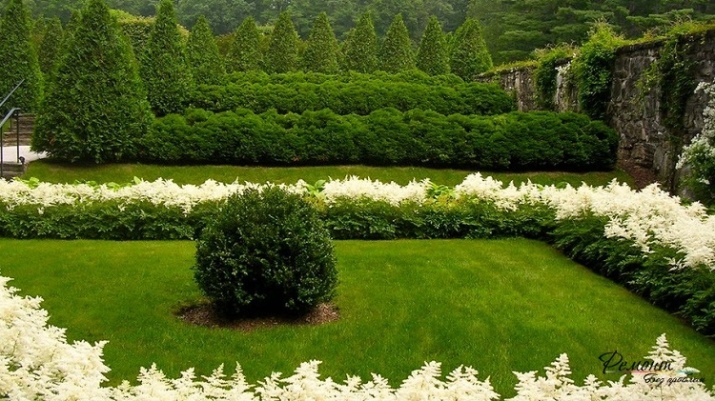
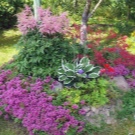
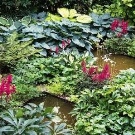
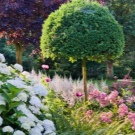
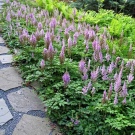
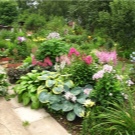
Combination with other plants in the garden
Astilba is in perfect harmony and blends with many flowers and shrubs in the garden. You can plant next to perennial astilba in a flower bed:
- lilies;
- daffodils;
- crocuses;
- tulips;
- cinquefoil;
- hosts;
- ferns;
- badan;
- juniper;
- hellebores;
- conifers.
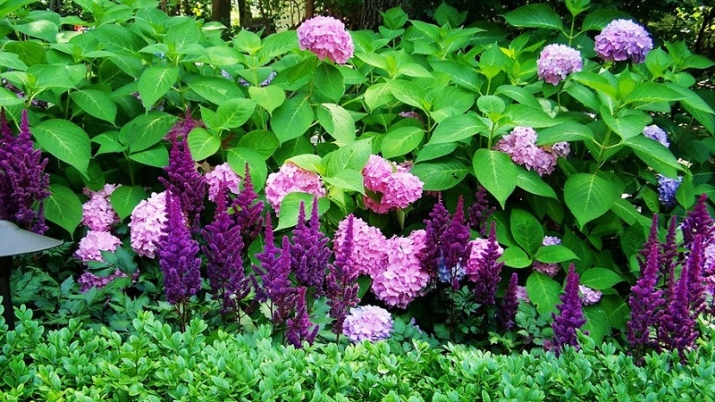
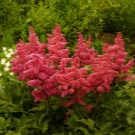
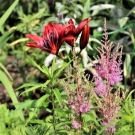
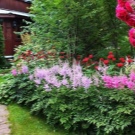
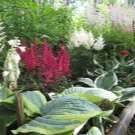
In the first year of planting, astilba leaves do not yet look so large and luxurious, and therefore snowdrops, hazel grouses and crocuses are often planted with this plant to fill the void around.
In spring, in landscape design, Astilba looks great with rhododendrons and herbaceous plants, Iberis. However, the best combination is considered to be planting astilba next to daylilies, hosts and badan in the same flower bed. Such a composition can become the most attractive in landscape design. Astilbe is also quite good next to roses, but a small distance should be left between them.
It is not always possible to make a beautiful design of the site the first time, which is why sometimes the help of a specialist may be required. If this is not possible, then you should familiarize yourself in more detail with the neighborhood of certain plants in the landscape in order to create not just a beautifully blooming composition, but also one that will grow and delight with its appearance for many years.
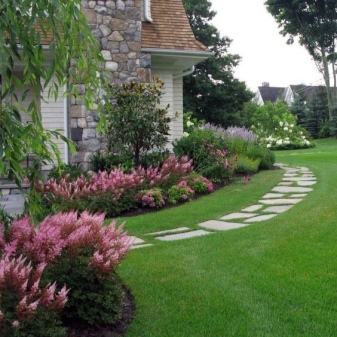
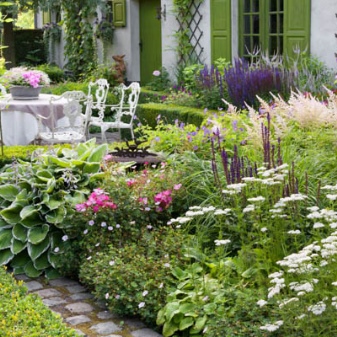







































































































The comment was sent successfully.